Church by the sea: The riddle of the ruin
There are wide, wide beaches here on the Polish Baltic Sea coast, beaches that are clean and mostly empty, even in summer. Walks can be taken for endless kilometers. And if you're curious, you'll come across one or two secrets along the way: buried bunkers, abandoned mansions, the summer home of a Nazi great...
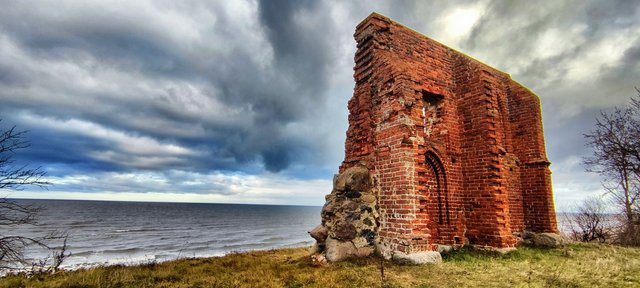 The last wall of the church
The last wall of the church
And this one too: a church that stood in the middle of the country 300 years ago. And today it has disappeared except for a single wall because the sea was getting closer meter by meter. What does meter by meter mean? Kilometer after kilometer!
 Somewhere in the past
Somewhere in the past
Eated by the sea
Apparently the much-hyped climate change began before the first human factory heated its first oven. Or was it completely different? Nobody knows for sure. Even determining the exact date of the construction of the church in Hoff, Polish Trzesacz, causes difficulties. According to locals, the church was probably built in 1250 or 1270. The first documented mentions of Trzesacz as a rich village with a parish church date back to 1331. The building definitely already existed back then.
 The sea is eating the land
The sea is eating the land
And according to all documents, the church was located an incredible two kilometers from the coast near the Polish town of Rewal. Over time, however, the Baltic Sea came closer to the Gothic church, swallowing up more and more land. The sea gradually ate 2,000 meters. A distance equivalent to 20 football fields. By 1750 the church was only 58 meters from a steep cliff that protected it from the sea.
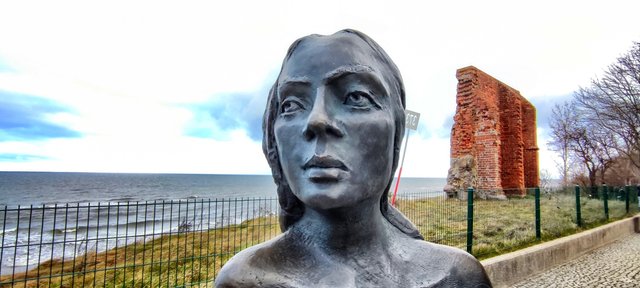 The Mermaid is looking for the next wave
The Mermaid is looking for the next wave
Meter by meter
But development continued and the Baltic Sea swallowed up more and more land. The cliff recedes. In 1853 the distance between the church and the sea was only 12 tiny meters and finally in 1868 only a single meter. Pastor Bahnemann and the community leaders wrote to Frederick the Great.
 View from the bridge
View from the bridge
They report that the church is no more than ten steps from the shore and that they are “forced to have one in Kurtzem demolished and rebuilt somewhere else, even though it is one of the oldest and best buildings in Pomerania .” However, the king rejected their request for a nationwide collection.
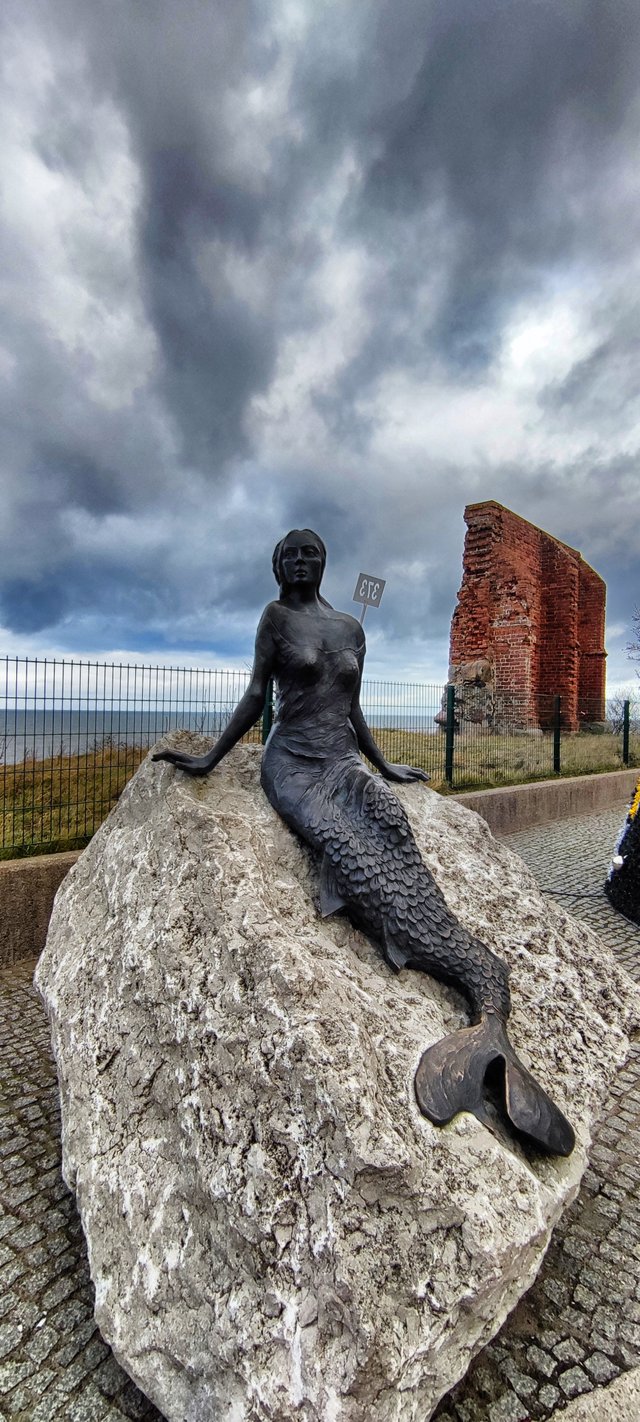 The mermaid with the last wall
The mermaid with the last wall
In view of the unreported destruction of the church, the decision to close the church was made on August 2, 1874. It still took a long time until the end came: it wasn't until 1901 that the first wall of the venerable church collapsed. And so it went on and on, for almost 100 years.
 The church in miniature
The church in miniature
The last collapse took place in 1994. Since then, only part of the south wall has remained, at least now protected by a newly built sheet pile wall that closes off the wide beach and ensures that, even during winter storms, the waves cannot further undermine the slope.
 Marram grass at the beach
Marram grass at the beach
A piece of history
But a piece of history has been lost here. According to the architectural principles applicable in the 13th century, the church in Trzesacz is a brick, single-nave church with a pentagonal apse, built on low foundations made of simple field stones.
 On the walk along the beach we met Romeo and Juliet
On the walk along the beach we met Romeo and Juliet
The internal dimensions of this small, modest church were originally 23.2 meters long and 8.55 meters wide. In total the church was 74 meters in circumference. The whole building was decorated with Cistercian ornaments, modest but tasteful.
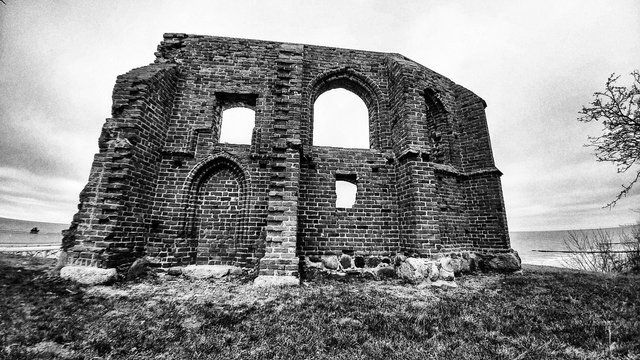 The remainings
The remainings
The tower was initially made of wood and only later, when enough money was collected, was a brick tower built. But it was later destroyed by the wild elements on the Sexton. Even before the church was built.
 On the cliff
On the cliff
Because the fishermen and farmers who belonged to the community knew what was threatening their beloved church, they were able to save much of the furnishings beforehand. So the Gothic crucifix was preserved, as was the Gothic triptych. which was brought to the neo-Gothic church in Trzesacz in 1905. The Protestant baroque altar also survived the disaster and can be seen today at Kamien Pomorski.
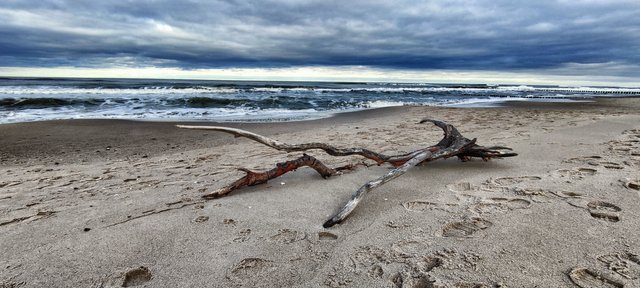 The strand is mostly empty
The strand is mostly empty
At the Obervation deck
In Trzesacz they also wanted to remember what the strange, lonely wall on the cliff had once been. Known as the “Ruins of the Gothic Church on the Cliff,” many visitors wondered why it had crashed there. So, in 2009, an observation deck was built that allows tourists to look at the ruins of the church from the side from which the sea ate them.
 An old painting from inside the church
An old painting from inside the church
It was supposed to be a very special perspective: the former wooden beach entrance was demolished to make it possible to secure the ruins. For this purpose, a structure made of steel and reinforced concrete with a height of 10.70 meters was built, which looks like a pier but does not reach the sea.
 Under dark clouds
Under dark clouds
Visitors can walk along it 36.60 meters high above the beach. The building is supported on two columns 4.50 meters apart. A staircase leads to the lower terrace with a length of 8.80 meters.
 "Under the bridge" (Rde Hot Chili Peppers)
"Under the bridge" (Rde Hot Chili Peppers)
From the platform you can view the sea or go down to the beach on a transparent steel staircase. Because the people here know what an aggressive opponent they are dealing with, all steel elements were protected against the extremely unfavorable weather conditions on the Baltic Sea coast with several layers of epoxy.
 On the left is the Café now
On the left is the Café now
At the Cafe Klifowa
Just not the steel screws.The statics of the construction are secured by two tubular frameworks that are connected with vertical and horizontal stiffeners. They provide a stable support for the bridge, which is designed in the form of a grating supported on a truss and fastened with gusset plates and sliding pieces.
 One of Feiningers paintings, named "Ruin by the sea"
One of Feiningers paintings, named "Ruin by the sea"
Right next to the last church wall on the land side there is a small sculpture that recreates the building in miniature. A mermaid is lolling next to it. And once you've seen enough, you can return to the cozy cafe-restaurant Klifowa five steps further on...
 In Fein ingers times this brigde doesn`t exist
In Fein ingers times this brigde doesn`t exist
One can think about the fact that the painter Lyonel Feininger probably sat in this exact spot when he drew the ruins of Hoff. Feininger, who spent many summers on the Baltic Sea and visited the ruins several times, has around 30 drawings, watercolors and paintings of the ruins.
Long after his expulsion to the USA, he remained occupied with this mysterious and actually disappeared church because, he says, "there was nothing in America that could compare with it..."
Thank you for reading and if you like my work please follow me on Hive, Travelfeed or Steem or visit my homepage koenau.de
 View above
View above
 You can see the church in the background
You can see the church in the background
 What a night
What a night
 This house could be the next...
This house could be the next...
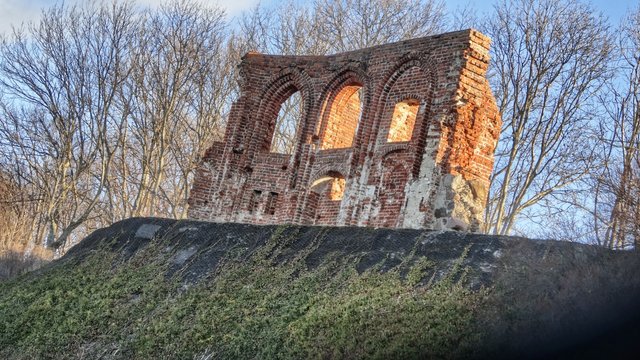





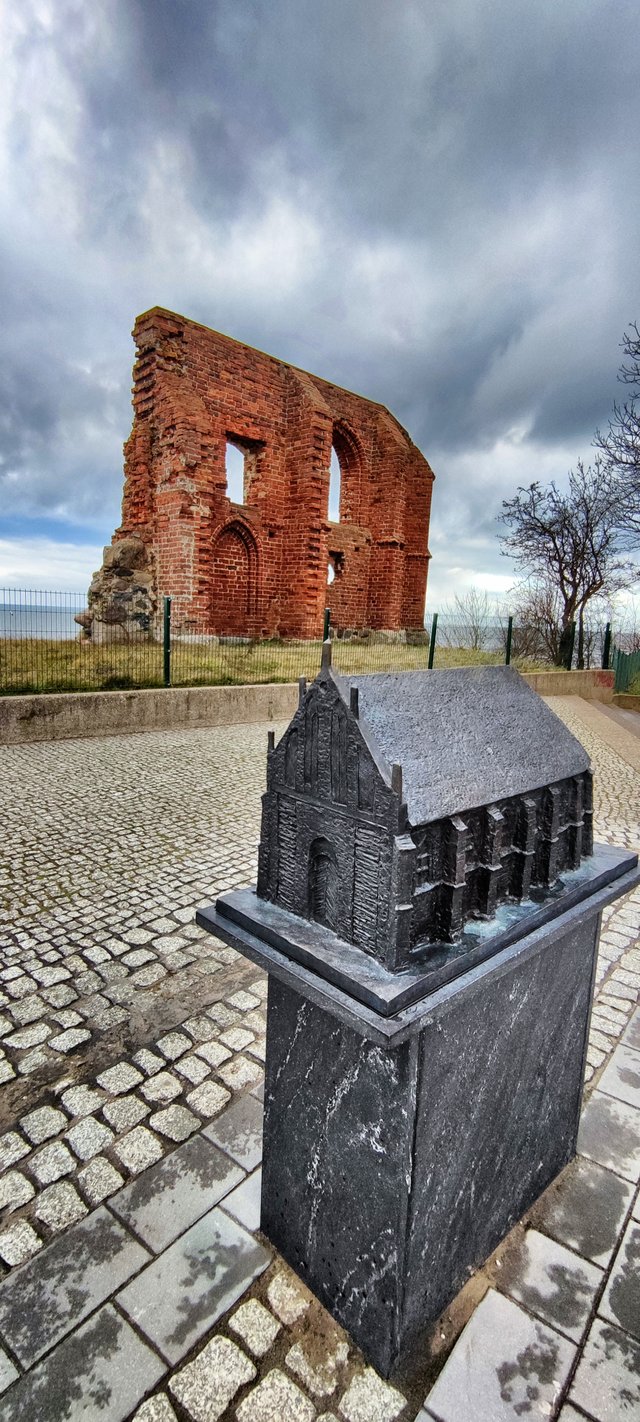




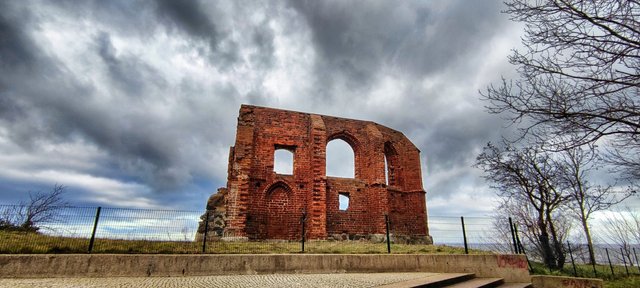
Congratulations @koenau! You received the biggest smile and some love from TravelFeed! Keep up the amazing blog. 😍 Your post was also chosen as top pick of the day and is now featured on the TravelFeed front page.
Thanks for using TravelFeed!
@invisusmundi (TravelFeed team)
PS: Why not share your blog posts to your family and friends with the convenient sharing buttons on TravelFeed?